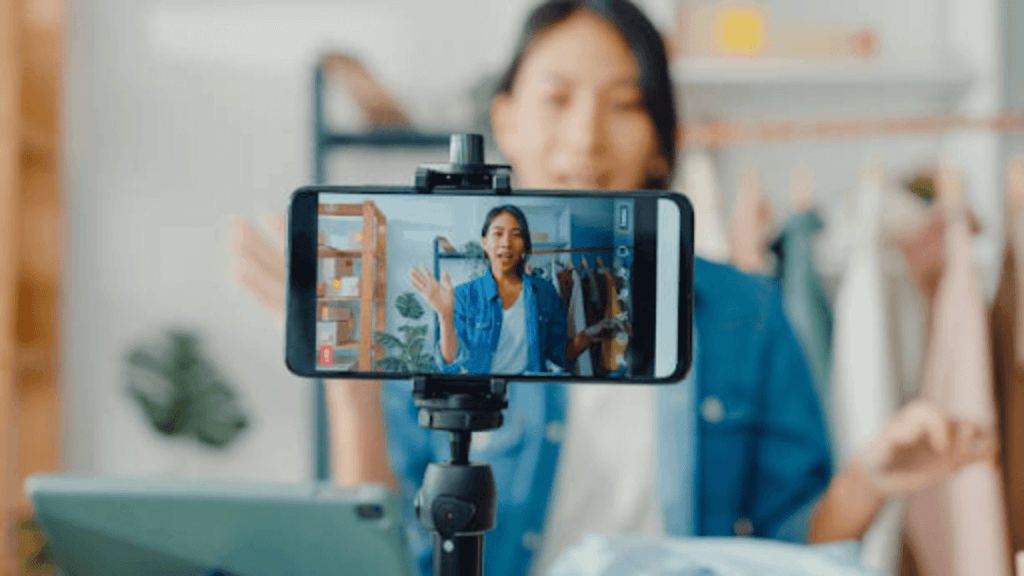
In the digital age, where information is constantly at our fingertips, video marketing has emerged as a powerful and dynamic tool for capturing the attention and engagement of audiences. Whether you’re a business looking to promote your products or services, a content creator seeking to connect with your followers, or an organization aiming to raise awareness, video marketing is a medium that can’t be ignored. In this blog, we’ll delve into the world of video marketing, exploring its significance, strategies for success, and the impact it has on audiences in the digital age.
The Rise of Video Marketing
The digital landscape has undergone a remarkable transformation in recent years, and video marketing has played a pivotal role in this shift. A few key factors have contributed to the rise of video marketing:
The Popularity of Video Content:
Audiences are consuming video content at an unprecedented rate. Whether it’s short, attention-grabbing clips on social media or in-depth, informative videos on platforms like YouTube, people are spending more time watching videos online.
Improved Technology:
The proliferation of smartphones and affordable, high-quality video recording equipment has made it easier than ever for individuals and businesses to create and share videos.
Social Media Integration:
Social media platforms, like Facebook, Instagram, and TikTok, have become hubs for video content. These platforms have developed features that cater specifically to video sharing, making it seamless for users to engage with video content.
Increased Engagement:
Video content tends to garner more engagement than text or static images. It’s a medium that appeals to our visual and auditory senses, making it more immersive and captivating.
The Significance of Video Marketing
Why is video marketing so significant in the digital age? There are several compelling reasons:
Audience Engagement:
Videos have the power to captivate and retain viewers’ attention. They can convey information in a visually appealing and engaging manner, making them a preferred choice for content consumption.
Human Connection:
Video enables you to establish a more personal connection with your audience. Viewers can see and hear the people behind the content, fostering trust and authenticity.
Versatility:
Video marketing is incredibly versatile. It can be used for a wide range of purposes, from product demonstrations and tutorials to storytelling and branding.
Higher Conversion Rates:
Studies have shown that video content can lead to higher conversion rates. It’s an effective medium for explaining complex concepts or showcasing product features, which can ultimately lead to more sales or conversions.
Improved SEO:
Video can positively impact your website’s search engine rankings. Platforms like YouTube are search engines in their own right, and embedding videos on your website can increase dwell time, a factor that search engines consider when ranking pages.
Strategies for Successful Video Marketing
To harness the potential of video marketing, it’s essential to have a well-defined strategy. Here are some key strategies to help you succeed in the realm of video marketing:
Know Your Audience:
Understanding your target audience is the foundation of any successful marketing strategy. What are their preferences, pain points, and interests? Tailor your video content to resonate with your audience.
Create High-Quality Content:
While you don’t need a Hollywood production budget, ensure that your videos are well-produced. Invest in good lighting, sound, and camera equipment. High-quality visuals and audio will enhance the viewer’s experience.
Tell a Compelling Story:
Storytelling is a powerful tool in video marketing. Craft a narrative that engages your audience emotionally, making them more likely to connect with your message.
Keep it Short and Sweet:
Attention spans are getting shorter, so aim to deliver your message concisely. A well-structured video that gets to the point quickly is more likely to retain the audience’s interest.
Optimize for Mobile:
Many people watch videos on mobile devices. Ensure that your videos are mobile-friendly, with legible text and clear visuals on smaller screens.
Use Eye-Catching Thumbnails:
Thumbnails are the first thing viewers see when browsing videos. Design custom thumbnails that are visually appealing and represent the content accurately.
Incorporate Keywords:
If you’re publishing videos on platforms like YouTube, use relevant keywords in your video titles, descriptions, and tags to improve discoverability.
Add Calls to Action (CTAs):
Encourage viewers to take specific actions, whether it’s subscribing, liking, sharing, or visiting your website. CTAs guide your audience and help you achieve your marketing goals.
Consistency is Key:
Maintain a consistent posting schedule to keep your audience engaged and coming back for more.
Leverage Analytics:
Use analytics tools to track the performance of your videos. Pay attention to metrics like watch time, engagement, and conversion rates to refine your strategy.
Types of Video Marketing
Video marketing takes on various forms, each serving a specific purpose. Here are some common types of video content used in marketing:
Explainer Videos:
These are short videos that explain a concept, product, or service. They’re perfect for breaking down complex ideas into easily digestible information.
Product Demonstrations:
Showcase how your product works and its key features. This type of video can help potential customers better understand the value of what you’re offering.
Testimonials and Reviews:
Customer testimonials and product reviews add authenticity and build trust. Let satisfied customers share their experiences with your product or service.
How-To and Tutorial Videos:
Share knowledge and expertise by creating instructional videos. These are valuable for establishing authority and helping your audience solve problems.
Behind-the-Scenes Videos:
Offer a glimpse into your company’s inner workings. These videos humanize your brand and show the people behind the products or services.
Live Streaming:
Platforms like Facebook Live and Instagram Live allow you to connect with your audience in real-time. Live videos create a sense of urgency and can generate immediate engagement.

Webinars:
Host webinars to delve into in-depth topics, answer questions, and provide value to your audience. Webinars are a great way to generate leads.
Storytelling Videos:
Narrate stories that resonate with your audience. These videos can create emotional connections and reinforce your brand’s message.
The Impact on Audiences
Video marketing has a profound impact on audiences in the digital age. Here’s how it influences and engages viewers:
Visual Engagement:
Video content combines visuals and audio, making it a more immersive and captivating medium. Viewers can see, hear, and often feel the content, which enhances engagement.
Trust and Authenticity:
Videos allow you to put a face to your brand. When people see and hear the individuals behind the content, they tend to trust the message more.
Emotional Connection:
Effective storytelling and visual elements can evoke emotions. When viewers feel a connection to your content, they are more likely to remember it and take action.
Information Retention:
Studies have shown that people tend to remember more information from video content than from text or images alone. This makes video a powerful tool for conveying complex ideas or product details.
Social Sharing:
Video content is highly shareable on social media. When viewers find a video interesting or valuable, they are likely to share it with their followers, increasing your reach and exposure.
Improved Conversion Rates:
Well-optimized video content can lead to higher conversion rates. Whether your goal is to generate leads, make sales, or increase sign-ups, video marketing can be a valuable asset in your conversion strategy.
Diversified Content:
Video allows you to diversify your content and reach different segments of your audience. Not everyone prefers reading long articles or scrolling through images—videos offer an alternative way to consume information.
Global Reach:
Video content is accessible to a global audience. It transcends language barriers, enabling you to connect with people from diverse backgrounds.
The Future of Video Marketing
As we move further into the digital age, the future of video marketing is bright. With advancing technology, we can expect more interactive and immersive video experiences. Virtual reality (VR) and augmented reality (AR) will play a role in creating engaging content. Live streaming will continue to grow in popularity, offering real-time interactions with audiences. Moreover, as AI and machine learning develop, personalized video content tailored to individual viewer preferences will become more prevalent.
Video marketing is a dynamic and indispensable tool for capturing and engaging audiences in the digital age. Its impact on viewers is significant, from building trust and authenticity to improving conversion rates and conveying complex information. To succeed in video marketing, it’s essential to craft a well-defined strategy, create high-quality content, and leverage a variety of video types. As technology continues to evolve, the future of video marketing promises even more exciting opportunities to connect with audiences in innovative and meaningful ways. So, whether you’re a business, content creator, or organization, harness the power of video marketing to stand out in the digital age.



